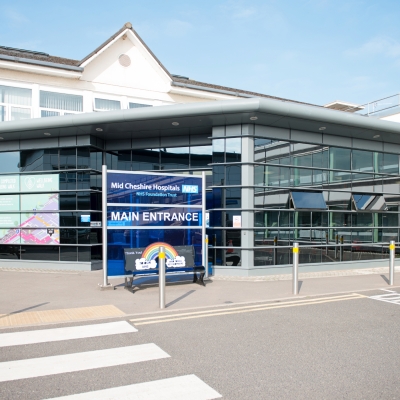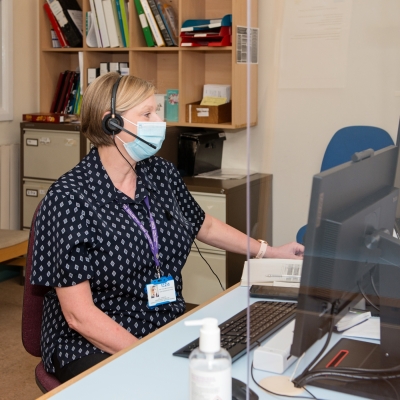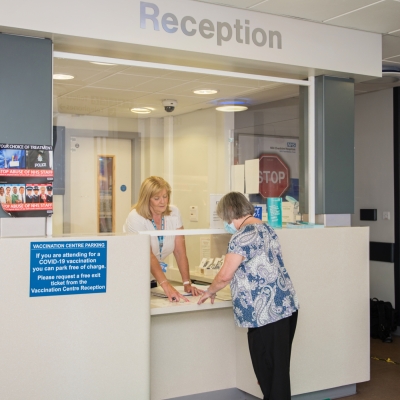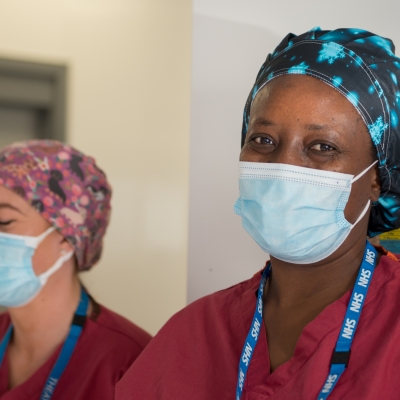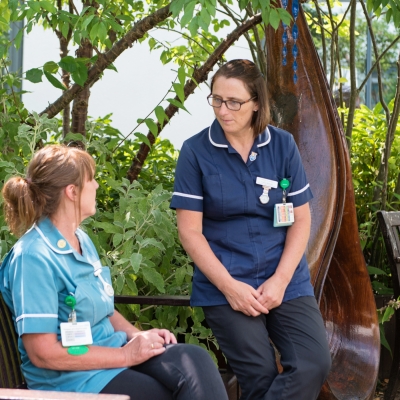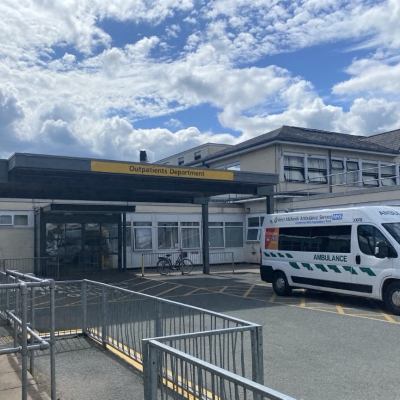Overview
Built in 1972, much of Leighton Hospital was constructed using reinforced autoclaved aerated concrete (RAAC) planks.
RAAC is a lightweight form of precast concrete, frequently used in public sector buildings in the UK from the mid-1950s to the mid-1990s.
RAAC has a lifespan of 30 years and Leighton Hospital is now 50 years old.
In 2019, we were made aware of degeneration and failure risks associated with this material, and instructions were issued by the NHS England/Improvement requiring the removal of RAAC planks by 2030.
To manage this risk, we have been working with NHS England and structural engineers to take the right steps and manage any issues to ensure the safety of patients, visitors, and staff.
Since 2019, to maintain the current building, an extensive programme of planned inspections and robust procedures have been introduced for the management of the roof, which assists significantly with controlling the risk.
The ongoing, rolling programme of inspection of the planks, which are in the roofs and internal and external wall constructions, along with remedial and refurbishment works where required, are preventative measures to reduce the risk of a collapse due to RAAC plank failing. While it can stabilise the structure it cannot reverse the damage and deterioration already present.
Over £113m has been invested since 2020 to support inspection and remedial works.
2024/25 programme
The three-year ward programme (2024 – 26) was approved by the Trust’s Executives in May 2024. The full funding allocation of £27.5m to deliver the 2024/25 programme was also approved.
2025/26 programme
We will publish full details about the 2025/26 programme once confirmed.
Frequently asked questions
Why is RAAC such a problem?
RAAC is a lightweight, bubbly form of concrete that was often used in schools, colleges, and Hospitals from the mid-1960s to the mid-1980s. In 2019 a national alert was raised about buildings that were built using reinforced autoclaved aerated concrete (RAAC) planks.
The original lifespan of the RAAC planks was 30 years and Leighton Hospital – 60% of which is RAAC - is now 50 years old. NHS England/Improvement issued instructions requiring the removal of RAAC planks by 2030.
What are the RAAC 5 Hospitals?
Nationally there are seven Trusts that have buildings predominately constructed of RAAC, two of which are already in the national New Hospitals Programme and Leighton Hospital is part of the remaining ‘RAAC 5’ including: Airedale, Frimley, Northwest Anglia, Queen Elizabeth Hospital King’s Lynn.
What are we doing to ensure the hospital is structurally safe?
Since RAAC was first discovered, the Trust has been working with NHS England, other affected RAAC hospitals and structural engineers to ensure the right steps are taken to manage any issues to ensure the safety of our patients, visitors, and staff.
To maintain the current building, an extensive programme of planned inspections and maintenance works has been in place since 2019, with over £55m spent so far:
- An ongoing, rolling programme of inspection
- Remedial and refurbishment works where required, noting that preventative measures to reduce the risk of a collapse due to RAAC plank failing can stabilise the structure but cannot reverse the damage and deterioration already present
- A strategic outline case for a new hospital development as part of HM Governments new hospitals programme.
What does structural safety work involve?
Repairing a RAAC panel is an invasive process with noise and dust, and which cannot be done without vacating a ward or department. To carry out this work on a ward a ‘decant’ system is put in place to move beds and patients into a vacant ward to enable:
- Structural support for any panels identified as being badly deteriorated or damaged
- Putting structural support into wards and other areas to further support the RAAC panels, with the most severely damaged planks supported with structural steel or timber (or Acrow-type props in non-clinical areas)
- A rolling programme ensures that all areas where RAAC planks are identified undergo inspection, with all planks categorised and mapped for increased monitoring or remedial works according to the structural engineer’s recommendations.
A number of props have been installed in non-clinical parts of the hospital. Where access is possible repairs have already been made but in others the props remain in place until the work can be done to repair the issues.
What does this mean for staff and patients?
The safety of staff, patients and visitors is our utmost priority which is why the Trust Board has elected to accelerate this current programme of inspection and remedial works where required.
To carry out the inspection and any remedial works means that there will be some unavoidable disruption, including several ward and service moves. These areas are closed to patients/public during structural works.
We thank patients, visitors and our staff for their patience and understanding while these vital works are carried out.
What is the long-term plan to address RAAC issues?
In May 2023, we revealed the Trust had received the green light for a state-of-the-art new build following the announcement by the then Secretary of State for Health and Social Care, the Rt Hon Stephen Barclay MP, that Leighton Hospital has been included in the Government’s New Hospital Programme.
We are fully committed to developing a new health and care neighbourhood, which will include our new Leighton Hospital.
Our ambitious plans recently took a major step forward after the government announced that our scheme will be exempt from its review of the national New Hospital Programme (NHP).
Visit the Healthier Futures microsite for full details about the new hospital programme.
Freedom of Information Requests
Theme 1. Applications for funding to fix RAAC related issues.
Theme 2. Details of the individual Trust buildings which contain RAAC
Theme 3. Structural reports and risk management of RAAC at the Trust
Theme 4. Structural maintence issues
Review dates: This page was last updated on 24 August 2023
